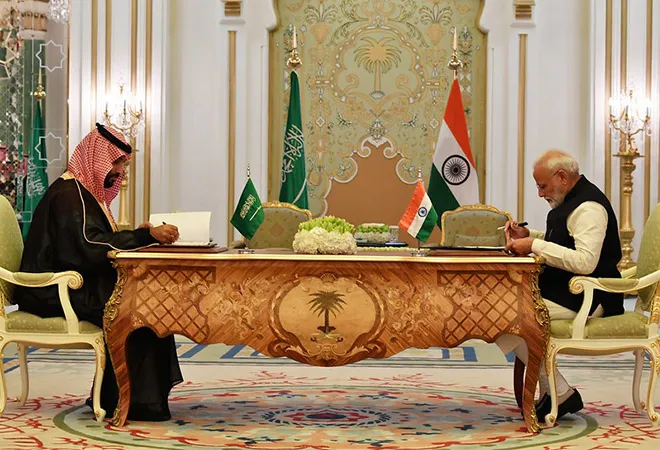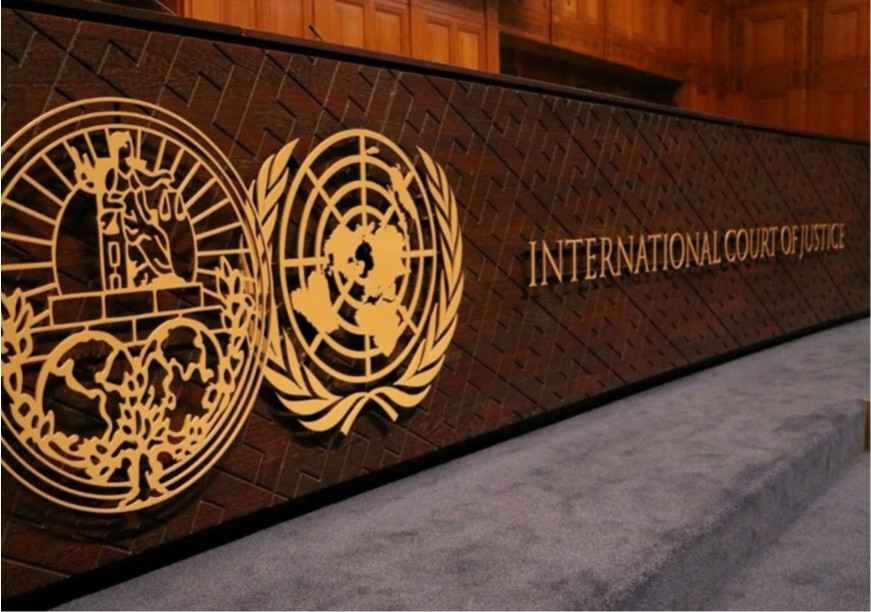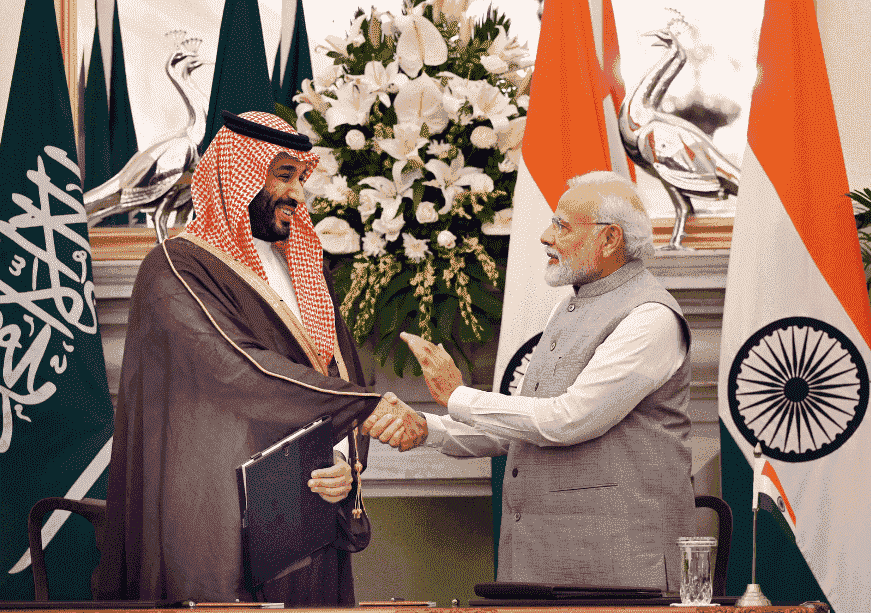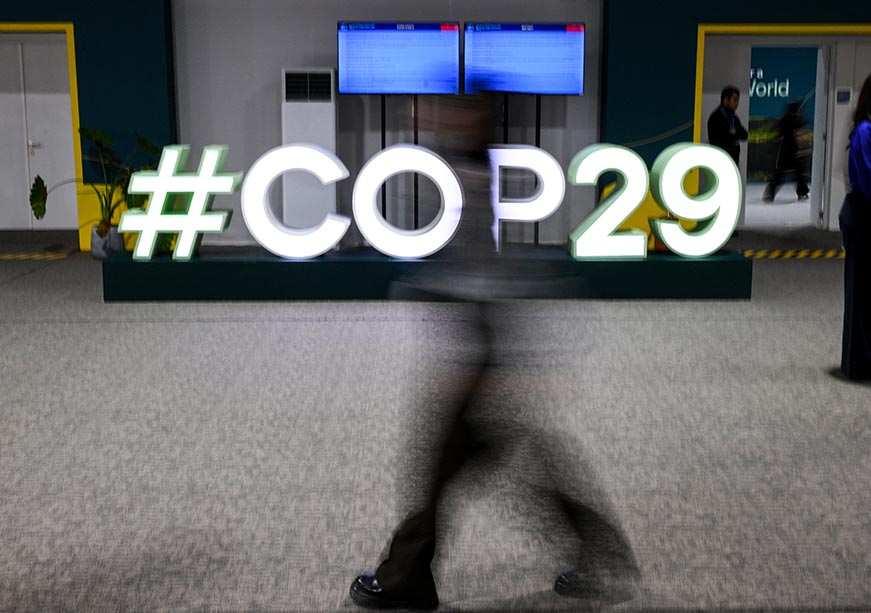In the past, India has managed a successful balancing act in a tripolar West Asia. Now, the restructuring of West Asia’s geopolitical landscape has allowed India to engage with West Asian states with even less political maneuvering.
India’s vision to establish itself as a powerful and prosperous state in Asia has led it down various paths in terms of its foreign policy towards West Asia. Over the years, New Delhi has adapted its foreign policy to suit the evolving needs and conditions of global politics — from the ideologically-driven Non-Aligned Movement to a policy based on greater pragmatism. Today, the increasing multipolarity of the global order has enabled India to pursue its policy of strategic autonomy greater freedom when it comes to international relations and trade.
To understand this transformation, we must first consider the ideological foundations of Indian foreign policy. During the Cold War years of global bipolarity, India’s foreign policy followed the principles of the 1955 Non-Aligned Movement (NAM) which PM Jawaharlal Nehru founded. After decades of international sidelining and subjugation, NAM aimed to use Afro-Asian solidarity to shape international relations from offices beyond Washington and Moscow. Thus, the non-aligned values of sovereignty, territorial integrity and non-interference in domestic politics were a crucial component of Indian’s foreign policy fabric. In the West Asian context, this was reflected in the Nehru-Nasser alliance, through which India supported the Arabs against Western interference, particularly in the case of Palestine and the 1956 Suez Crisis.
After decades of international sidelining and subjugation, Non-Aligned Movement aimed to use Afro-Asian solidarity to shape international relations from offices beyond Washington and Moscow.
By 1991, the Cold War formally ended with the dissolution of the USSR. Half a decade before the dissolution, changes were well on the way and the Soviet Union’s sphere of influence was incrementally receding. The US-sponsored version of neo-liberalism emerged as the final evolutionary form of global governance. Such unipolarity presented India with significantly less flexibility of options in setting its West Asian policy.
One example of this was the Gulf Crisis. On 2 August 1990, the V.P. Singh coalition government faced a threat to its geopolitical interests. Iraqi forces on the orders of President Saddam Hussain had invaded Kuwai, an oil-producing country. As the international community began to rally against Iraqi hostility, New Delhi failed to publicly align itself with either side. Iraq, a non-aligned secular state in a sea of Gulf monarchies, was India’s natural ally to for ideological reasons. Iraq was also one of the few Middle Eastern countries that supported India’s claims on Kashmir. Thus, upon Iraq’s invasion of Kuwait, India was faced with a serious policy dilemma — would it stick to its traditional stance as a non-aligned power and take a stand against Western intervention in the conflict? Or, would it stand by the Gulf states and adhere to the policies of the US, considering new economic opportunities and a changing world order?
The Singh government eventually chose a third option: ambiguity. India failed to formally condemn Iraq for the invasion due to their strong relationship. Instead, they stressed on the security of the 185,000 Indian expatriates stranded in the region. Foreign Minister I.K. Gujral was caught embracing Iraqi Prime Minister Saddam Hussain and became an infamous symbol of India’s weak-willed diplomacy. According to the Far Eastern Economic Review (6 September 1990), India encouraged “the soonest possible withdrawal of Iraqi forces.” Despite this, they maintained their strong opposition to any intervention outside of the UN framework. Gujral gave warnings for what he saw as great power politics eating away at the true multilateral foundations of the United Nations.
Upon Iraq’s invasion of Kuwait, India was faced with a serious policy dilemma — would it stick to its traditional stance as a non-aligned power and take a stand against Western intervention in the conflict? Or, would it stand by the Gulf states and adhere to the policies of the US, considering new economic opportunities and a changing world order?
In the months to follow, India’s stance on the issue grew more pronounced as V.P. Singh gave way to a new government led by Chandra Shekhar. It had become clear that India’s inaction would cost it in the future, particularly through poor relations with the Gulf countries and their Western allies. Through this calculation, India supported the UN Security Council Resolution 678 in November 1990- which authorised the use of force against the Iraqi army if they refused to withdraw before 15 January 1991. India did not contribute its military forces in the coalition against the Iraqi army, however, New Delhi found itself pressured into supporting the US led coalition against the Iraqi army through intelligence and assistance. In January 1991, India allowed American military planes to refuel at Indian facilities, which was met with great opposition. The decision was largely seen as political rather than functional, as the US made it clear to the world which side India stood on. In this sense, the Gulf crisis was treated by the US as a “test of friendship”, as described by former Indian foreign secretary Muchkund Dubey.
However, India was not ready to discard its commitments to South-South cooperation yet. On 2 March 1991, the UN adopted Resolution 686 after an 11-1-3 vote, India and China being two of the three abstainers. The resolution largely dealt with settling the boundary dispute, rebuilding the affected areas of Kuwait, and Iraqi liability for damage. However, Indian representatives disagreed with the continuation of the ‘authorisation of force’ clause of Resolution 678. The act of abstaining signaled India’s ideological commitment to non-interference, especially considering an overly eager United States, who they feared was trying to subdue Iraq beyond the parameters of the conflict.
Nonetheless, as one of the first political crises of the post-Cold War world, the Gulf War acted as the US’ public announcement that a new world order had arrived. While the fear of a Washington-centric system gripped Indian leaders, the crisis also called into question the ideological burdens and relevance of non-alignment. India was forced to face the realities of a neoliberal world in which economic benefits came with political costs.
Increased multipolarity has enhanced India’s ability to truly pursue its national interests internationally, without involving itself in messy political alliances or ideological factions. This freedom is synonymous with the idea of ‘strategic autonomy.’
As we near the end of the second decade of the 21st century, it has become clear that the gears of the international machine are once again in motion. American hegemony is being challenged economically, militarily, diplomatically and culturally. Multipolarity is growing with the rise of regional powers such as Russia, China, Saudi Arabia, Iran and India. Without an overt need to appease Washington, India can conduct its foreign policy with a significant amount of independence. Increased multipolarity has enhanced India’s ability to truly pursue its national interests internationally, without involving itself in messy political alliances or ideological factions. This freedom is synonymous with the idea of ‘strategic autonomy.’
In the past, India has managed a successful balancing act in a tripolar West Asia. Now, the restructuring of West Asia’s geopolitical landscape has allowed India to engage with West Asian states with even less political maneuvering. Through a strictly business attitude, India has pursued its most favourable economic opportunities without the burden of managing political ramifications.
One such act of political maneuvering is India’s response to the simmering crisis in the Persian Gulf, which continues to be a region of unsurpassable importance. In terms of energy security, trade and people-to-people ties, stability in the Gulf is a major priority in India’s foreign policy calculations. The crisis began on 8 May 2018, when President Donald Trump withdrew the United States from the Joint Comprehensive Plan of Action (JCPOA). This decision reinstated sanctions against Iran due to unverified claims of non-compliance.
With Iranian crude oil comprising 10% of India’s energy imports, India needed a concise strategy to eliminate tensions and reduce market instability.
India’s most obvious concern was energy security. With Iranian crude oil comprising 10% of India’s energy imports, India needed a concise strategy to eliminate tensions and reduce market instability. In the meantime, the Trump administration granted waivers to eight heavy consumers of Iranian oil, including India. This gave them until 2 May 2019, to either completely end oil imports from Iran or face sanctions from the United States. By 24 May 2019, Indian Ambassador to the United States — Harsh Vardhan Shringla — announced that India had ended oil imports from Iran, in keeping with American requests. However, in a Parliament session during early July, Minister of State for External Affairs, V. Muraleedharan, made it clear that India’s “bilateral relations with Iran stand on their own and are not influenced by India’s relations with any third country.” While oil imports had significantly decreased, this was expressed as a short term measure. Furthermore, the Indian government had no intention of suspending trade or infrastructure development in Iran.
Despite acknowledging their comprehensive partnership with the United States that has only grown under PM Narendra Modi’s vision, Indian foreign policymakers have stuck to their traditional stance on strategic autonomy. The Indian External Affairs Minister S. Jaishankar’s meeting with US Secretary of State Mike Pompeo in late June 2019 reflected this strength. Jaishankar clarified that as a nation that imports 85% of its oil primarily through the Gulf, India will push for a diplomatic resolution of the matter to secure its interests. Moreover, he maintained that India will use its own metrics to assess its foreign policy, not the United States’. During PM Modi’s meeting with Iranian President Hassan Rouhani on 26 September at the UN General Assembly, he confirmed that in order to maintain peace and stability in the region, India will continue to prioritise diplomacy and dialogue over isolation.
Such an assertion of strategic autonomy reflects India’s current foreign policy towards West Asia. India’s policy is motivated by its active pursuit of economic opportunities in West Asia, whether it be vis-a-vis energy security or greater connectivity and trade through the development of Chabahar Port in the Iranian case. In a time when global powers are shifting inwards, India has taken up an important role as one of the few nations willing to stand behind the promise of globalisation.
The author is a research intern at ORF.












